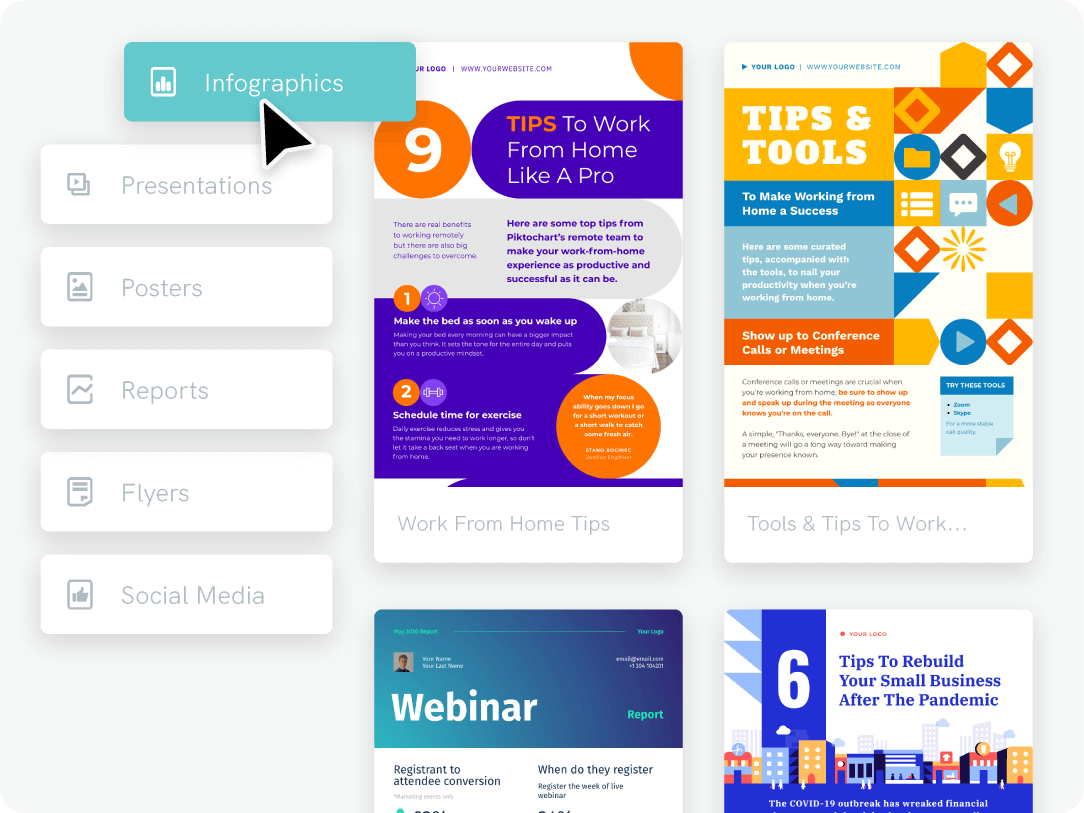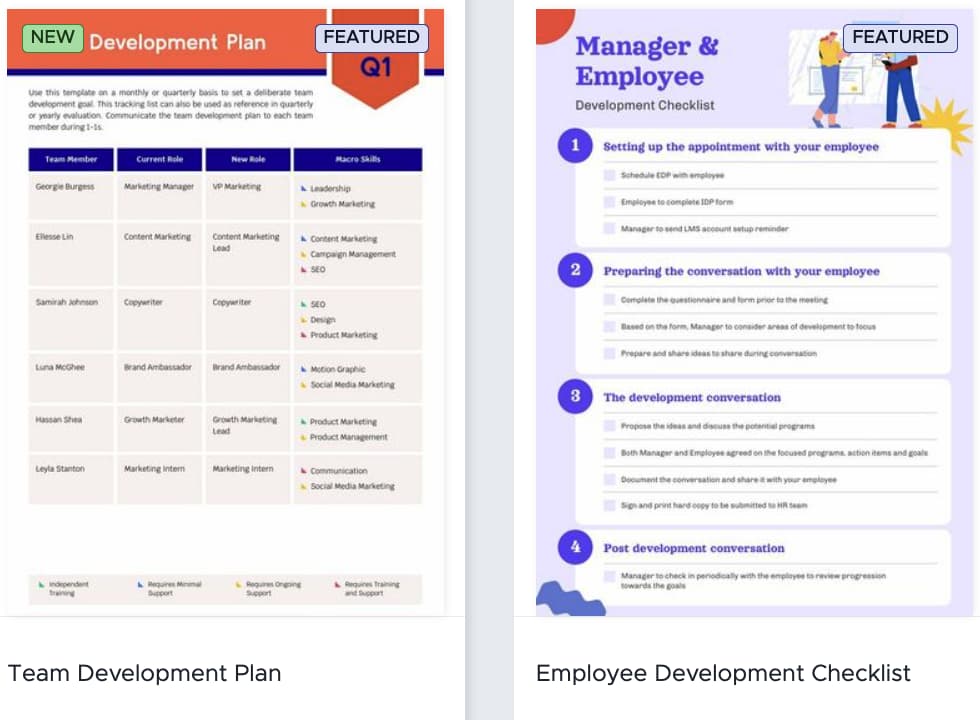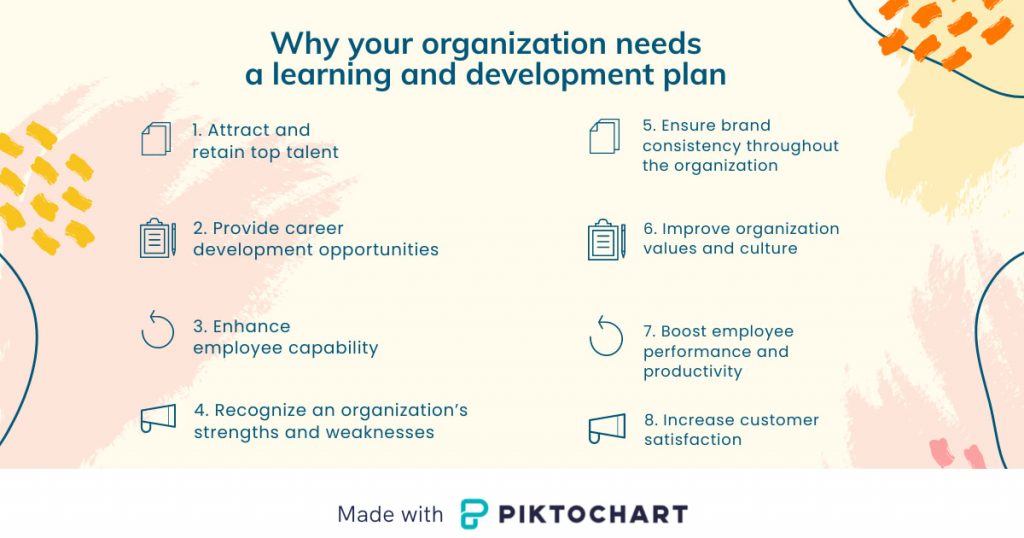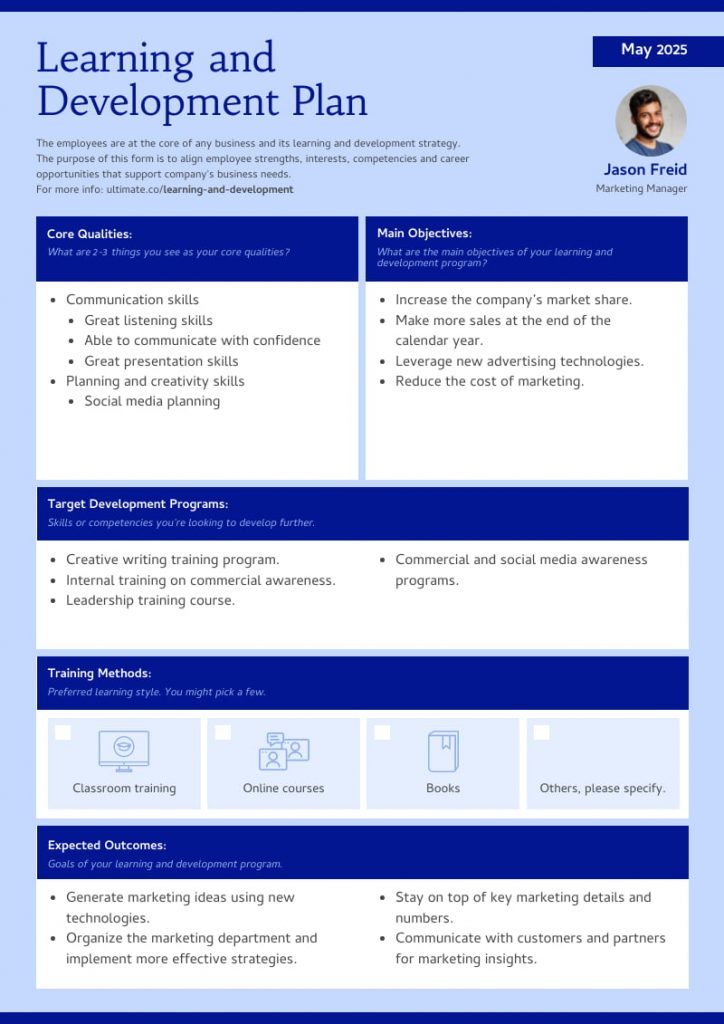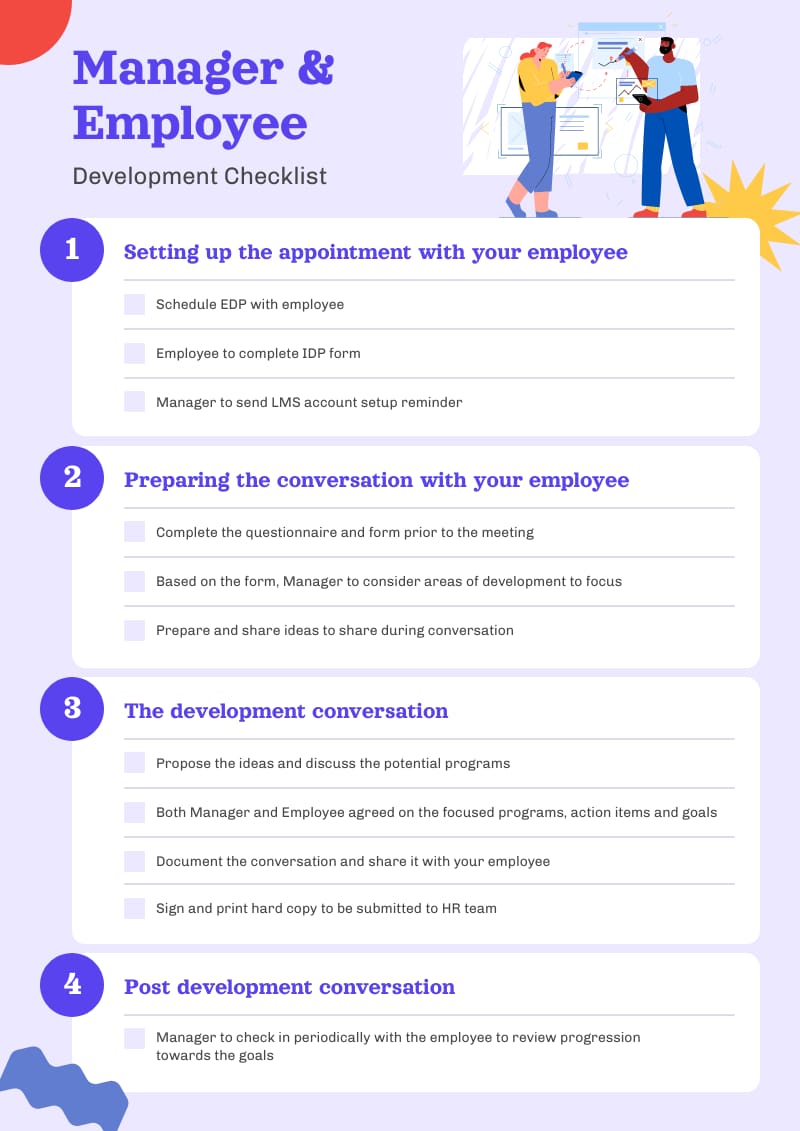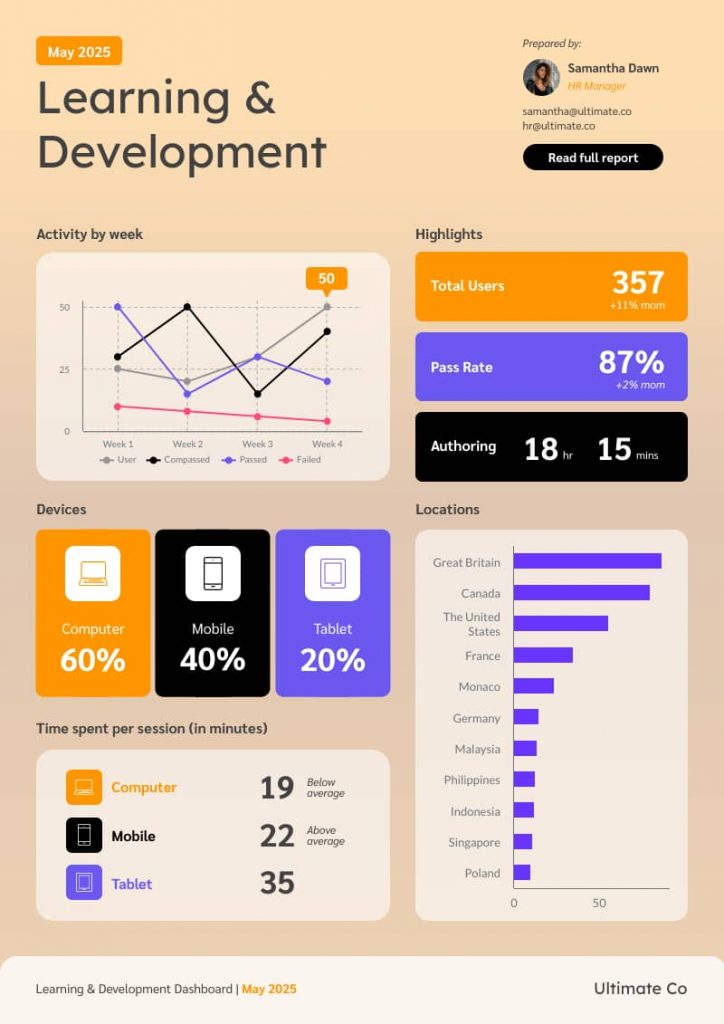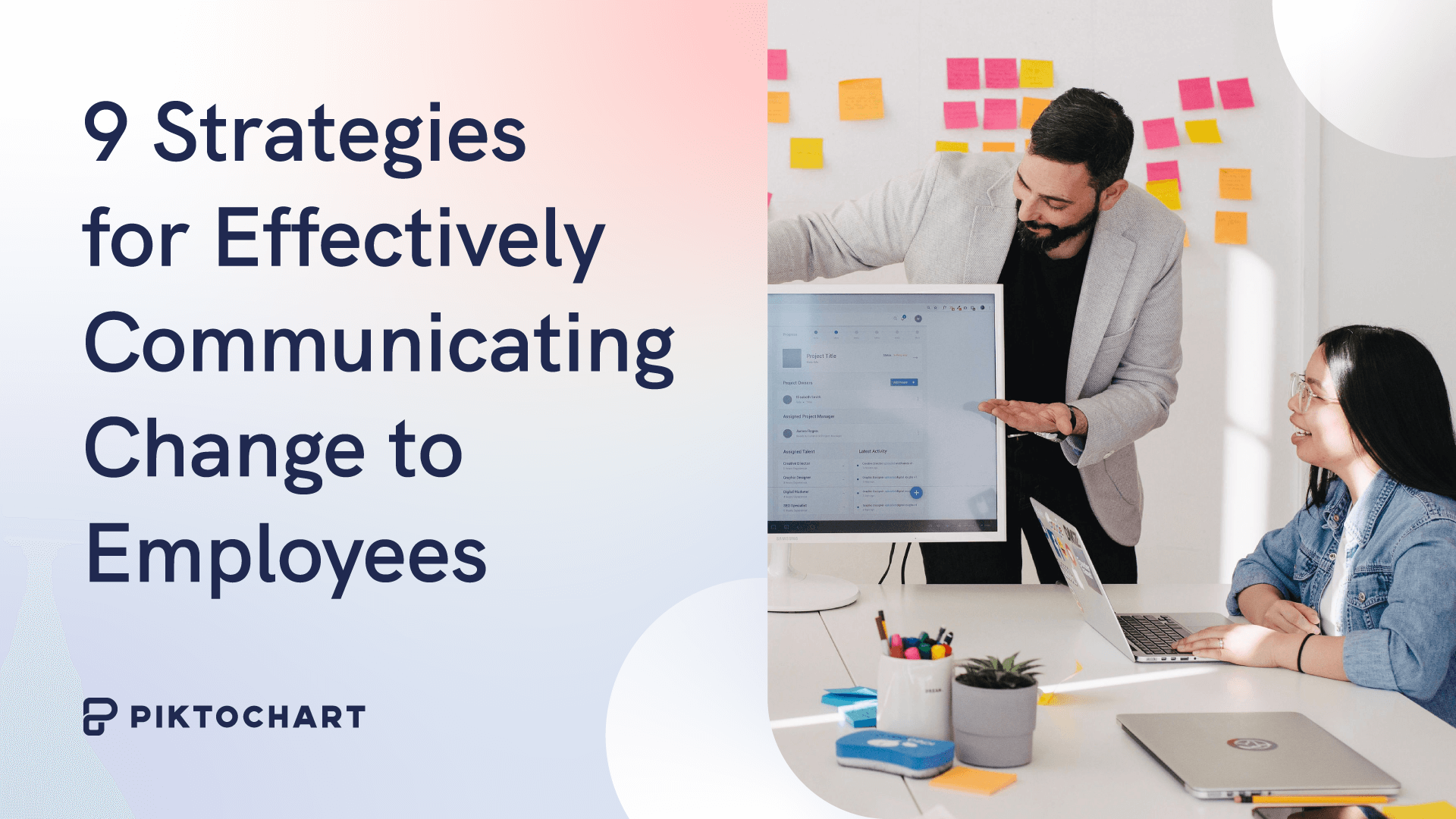Over the years, we’ve seen the business environment evolve beyond what is considered traditional, making the concept of creating an ’employee development plan’ more important than ever.
This has become even more prominent when we factor in the effects of the coronavirus pandemic, and the increase of remote workers and hybrid working business models. In addition to workplace environmental restructuring, more than ever, all hands must be on deck with high-performing employees to deal with the new demands of this dynamic business future.
How to turn professional goals into an action plan
Yet, in turn, these employees still have career goals, professional goals, and a desired career path that must be respected and achievable through an action plan to diminish employee turnover.
Organizations need to embrace, more than ever, a learning and development strategy that helps employees cope with these situations. This includes providing learning programs, additional benefits, and career development plans that can be achieved in a realistic timeline to help your employees grow professionally and achieve their own goals and goals for your business through actionable steps.
Several studies suggest that employee training and the implementation of employee development plans benefit both the company and its workers. For this reason, development opportunities and learning programs remain some of the top considerations for job seekers today.
However, organizational learning and development plans and strategies also have to be effective, achieve goals, and aim to diminish obvious staff skill gaps.
As HR and senior management organize the right training programs and employee development plans, employees must be appropriately positioned to receive them.
So, how do you ensure harmony among all the different parts and players to achieve goals?
In this guide, we’ll explore all there is to know about learning and development in the context of employee training, the benefits, and how a business can set up a successful learning and career development strategy.
You’ll also find examples and related human resources templates on how you can create that action plan and success strategy yourself. Visualize roadmaps through timelines, presentations, and planners.
Table of Contents
Want a head start with your learning and development plan? Grab our hot-off-the-press employee development plan templates for your learning and development projects. They’re easy to edit and customize!
What is a learning and development plan?
A learning and career development plan involves the continuous educational processes of learning new working methods and concepts, improving skills, and gaining more knowledge about one’s duties within a company.
Organization development programs update staff on new trends, skills, and technologies within the global workforce.
It also serves to inform workers of new policies, laws, and safety information, as well as organizational procedures and rules.
Why your organization needs a learning and development plan
If properly organized and carefully followed through, a learning and professional development plan will benefit an organization in several ways.
These are some of the crucial upsides to investing in an employee development plan.
In the past, employee development was carried out to improve productivity. Now, it also focuses on attracting top talent, especially in industries where there are a good number of opportunities for staff to switch employers.
The opportunity to learn more and develop through a structured development plan is undoubtedly one of the key considerations when selecting an employer.
Employees want to remain relevant, and they recognize that that is only made possible with a professional development plan in place.
Therefore, a good learning and development plan appeals to potential hires and helps retain talent within a company’s workforce. And just like in sales – replacing employees is much more expensive than acquiring them, with a 2020 Work Institute study showing voluntary employee turnover costs U.S. businesses more than $630 billion annually.
2. Provide upskilling and career development opportunities
Learning and development plans provide upskilling opportunities. This empowers your workforce to perform their duties better and prepare for new or more responsibilities that align more with their strengths.
3. Enhance employee capability
An organization’s human capital is a key part of the development process, which is why its knowledge base needs to be consistently updated to avoid a decline in capability.
Staff learning contributes to this and positions the organization better towards success when hitting its development goals. For example, if you aim to enrich your blog post with unique guest posts, you can train your staff to use an AI detector to discover AI-generated content.
In fact, companies that invest in their staff and leaders during transformational changes are 2.4 times more likely to achieve their performance targets.
4. Recognize an organization’s strengths and weaknesses
When an organization invests in learning and professional development plans, the avenues to recognize strengths and weaknesses open up.
This makes it possible to maintain the positives and continuously grow their strengths while developing skills to strengthen their weaknesses. This increases the overall confidence within the company and maintains a healthy working environment.
5. Ensure brand consistency throughout the company
Updating staff on the latest industry trends and internal policies ensures transparency. This structure reinforces policies that are well-known and breeds collaboration among employees.
6. Improve company values and culture
The reality of today’s workforce is an increasingly hybrid and global model, with teams dispersed across a wide range of locations.
Despite having employees working from different places, a company must maintain its values-based culture and build a sense of community. An effective learning plan is required to instill this into employees regardless of where they work to be considered a success.
7. Boost employee performance and productivity
One of the ultimate aims of a learning and development strategy is to enhance performance and productivity. Your workforce will understand their roles better and develop new skills, improved confidence, and a sense of responsibility to handle tasks more appropriately.
8. Increase customer satisfaction
A trained workforce is crucial in increasing customer satisfaction.
When your staff understands their roles, have confidence, and are dedicated to the company’s goals, the customers get improved services and remain happy with the company’s services.
How To Create and Roll Out a Solid Learning and Development Plan in 6 Steps
Now that you already know the benefits of learning and development in an organization, your next step is to develop a plan and implement it.
The implementation and delivery to employees are just as important.
Below are the steps for achieving a successful learning and development strategy.
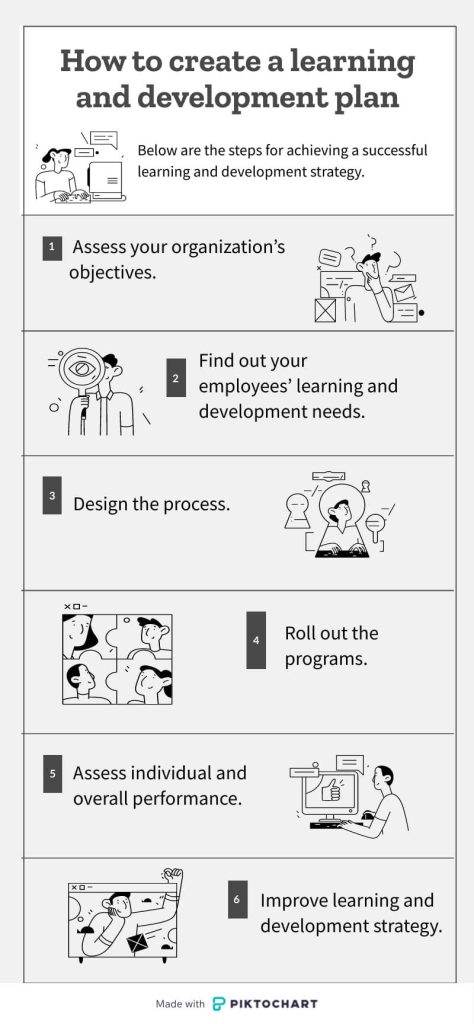
Assess your organization’s objectives
A good starting point when creating an employee’s development training program is to assess the organization’s goals, business objectives, and general strategy.
This part should form the bedrock of your strategy – because for any program to work, it has to align with business goals.
A learning and development strategy that is not in agreement with company objectives could be irrelevant or, worse, hurt the company’s growth. Therefore, it’s essential to engage senior management for this step.
The HR department should create a checklist of goals and consider whether the program contributes or not.
You can use the sample checklist below as a starting point:
- Where does the business aim to be in the next 5, 10, or 15 years?
- What values is the business known for?
- How can the business be more competitive?
- How can new technology trends affect the business?
- How does the training help the business expand?
These and other relevant questions based on the company’s goals should help clarify employee development needs about the overall business strategy.
2. Find out your employees’ learning and professional development needs
The workforce should be at the core of any business and its learning and development strategy.
Since the whole idea behind a development program is to improve employee capabilities and employee performance, their individual growth needs should be at the top of the list.
Not only will this increase employees’ learning, but it will also encourage employees to perform better, be engaged, and promote retention.
This step will clarify the skills of the employee and what they need to do to improve their performance. It also prevents a one-size-fits-all approach to learning and development, except for general programs, such as social learning and health or safety training.
The HR department needs to effectively formulate assessment methods to determine the team’s learning and development needs. This is typically done through supervisors and creating self-assessments.
Self-assessment can be tricky with tendencies of false information, but if used correctly, it may also be the best form of getting data from employees.
At this point, it is important to stress the need to constantly communicate with employees and incorporate them into the company’s core belief systems and decision-making processes.
3. Design the process
Based on the first two steps above, the HR department should be able to create a learning and development plan that works for the business and its employees.
There is already a foundation of organizational priorities, and the professional development needs are clarified.
Next, the development strategy should use modern training methods like presentation software while considering budget, timing, training contents, and materials.
These are examples of some modern training methods:
- In-person sessions
- Classroom style sessions
- Online training
- Certification programs
- Courses
- Mentoring
- Conferences
Companies can determine the most effective learning methods based on strategic objectives and intended business impact. They may also consider employee preferences and experiences.
4. Roll out the programs
Training delivery and support are essential steps in ensuring the professional development of employees.
No matter how much planning you’ve put into the development strategy, the main purpose is to deliver a robust learning experience creating additional skills.
Trainings also need to be delivered in feasible mediums. For example, a business with a hybrid remote work model may have the option to host or create online courses for those who can’t attend in person.
5. Assess individual and overall performance
According to a LinkedIn report, less than 10% of CEOs report seeing the business impact of their learning and development strategy.
These numbers are shockingly low and could be traced to several factors, such as not identifying the actual training needs of employees or failing to deliver the training effectively and engagingly.
Nevertheless, you must always assess the impact of these learning and development programs.
Feedback from participants is one of the standard methods, but assessing individual and aggregated performance after the program rollout will give you the best picture.
Make sure to set up key performance indicators to measure how much of the new skills employees were able to retain and use and the impact on company performance and processes. This reveals pending issues and future requirements for subsequent training.
6. Improve learning and professional development strategy
Lastly, you can improve your learning and development strategy by addressing employee feedback.
Allow employee feedback and consider whether you have to revise company learning objectives, adjust employee needs, or switch up the process.
5 Learning and Professional Development Plan Examples & Templates
Since it can be challenging to create a functional training strategy, we’ve developed a few learning and development templates that you can use.
You can apply any of them by replacing the details with relevant data from your company.
1. Learning and professional development plan template
2. Team development plan template
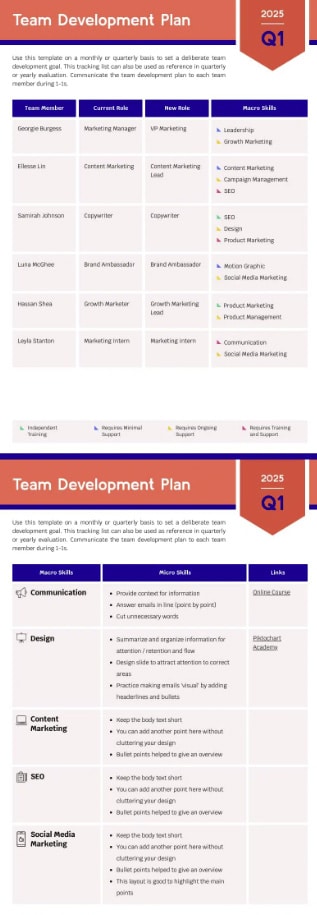
3. Manager and employee development progress checklist
4. Employee training newsletter template
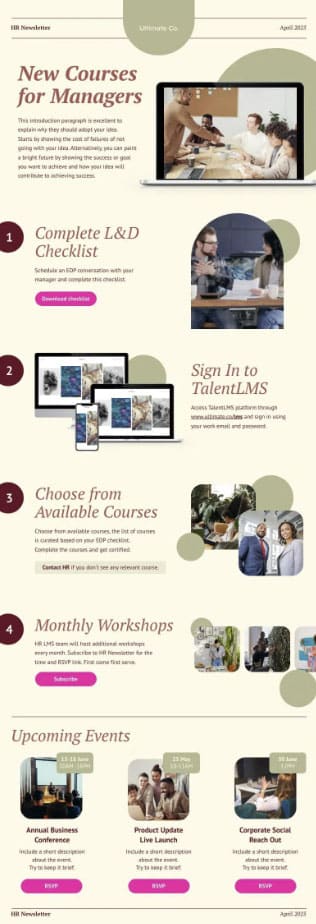
5. Learning and development plan template for reporting
Another benefit of these development plan templates is the speed at which you can create your learning and development checklists and reports.
Take it from Lindsey Mullins, an instructional designer working at one of the biggest retail brands in the United States. Together with her team, Lindsey creates learning and development content through visuals like infographics and presentations.
“Within Piktochart, the templates can be customized to create a beautiful and professional visual using half the time with a different program or when starting from scratch,” says Lindsey.
Watch the short video clip below to learn the different ways that Lindsey and her team use Piktochart for their organization’s learning and development plan projects. With Piktochart’s infographic maker, it’s easy to create learning and development visuals.
Getting Started With Your Learning and Development Plan Template
Now that you understand the importance of a learning and development strategy for a business, there’s no better time for planning to identify and dedicate resources to create a template document that works for your team.
A lot of these training programs may end up being ineffective. This happens when companies make assumptions, don’t carefully communicate with employees, or skip any of the steps outlined above to develop a successful program.
As mentioned above, it is essential to make your learning and development strategies employee-focused. Planning them at the center of the project ensures streamlined and practical training for your team. However, it should also be aligned with your company goals and be delivered in an engaging and feasible way.
While this project may seem a bit daunting at first, the reward is worth it; for your business, for you as a manager, and for your hardworking team. Focusing on and prioritizing employees’ professional goals, career goals, and desired career path makes for happy, productive, and loyal staff. It can help employees perform and accomplish tasks better, foster cooperation, reduce employee turnover, and promote job growth externally and internally in an organization.
Use the templates above as starting points for performance reviews and more. If you want to explore more relevant templates or have a specific development plan template in mind, you can create a free Piktochart account.
Want a head start with your learning and development projects?
Grab our hot-off-the-press templates for your learning and development goals in your organization. They’re easy to edit and customize!
Get access to the templates